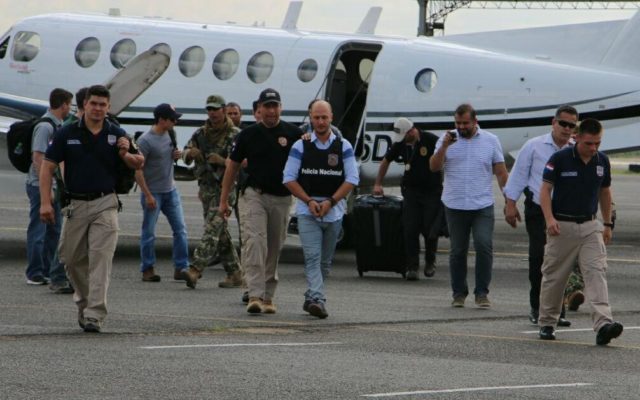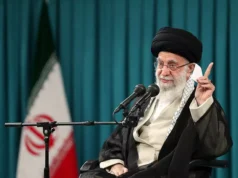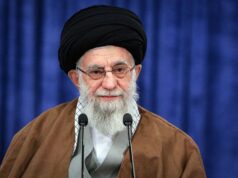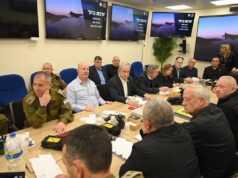Will the Biden administration go after Hezbollah’s drug trafficking and money laundering networks?
Hezbollah’s direct involvement in the drug trade is well documented, ongoing, and a threat to U.S national interests. The Biden administration needs to build on the past four years and pursue Hezbollah’s money laundering and drug trafficking networks even more vigorously than the Trump administration did.
Project Cassandra: Hezbollah’s Criminal Networks
Much of what we know today is the result of Project Cassandra, a decade-long operation run through the Drug Enforcement Administration’s Special Operations Division, which sought to stop Hezbollah from trafficking drugs into the United States and Europe.
Hezbollah’s intimate connection to Latin American drug cartels became known by coincidence when, in 2007, Colombian wiretaps meant to monitor La Oficina del Envigado, the Medellin cartel later named by DEA as a key partner to Hezbollah, picked up Arabic conversations traceable back to a man named Chekry Mahmoud Harb. DEA brought in an Arabic language expert who suddenly realized Hezbollah was arranging multi-ton shipments of cocaine to the Middle East while working with the Medellin cartel. The resulting investigation, code named Operation Titan, eventually opened a Pandora’s box, which led to numerous cases spanning more than a decade. The main takeaway was that this was not a small sideshow by loosely affiliated individuals. It was a multi-billion-dollar, worldwide operation orchestrated by top officials within Hezbollah’s inner circle.
Hezbollah still depends financially on Iranian largesse. But its growing budget – in itself a consequence of Hezbollah’s expanding role in the region as an Iranian terror proxy – means that outside sources of income have become more important in the past two decades. Hezbollah has financed itself not only by leveraging expatriate communities through charitable donations, but also by recruiting members of the Lebanese diaspora to build an elaborate global money laundering operation – Hezbollah’s laundromat – for the benefit of organized crime. Profits from such schemes help finance Hezbollah’s operations at the tune of hundreds of millions of dollars a year.
Perhaps the most famous network DEA targeted was the one run from Colombia by Ayman Joumaa and his associates. U.S. authorities believe that Joumaa, a Lebanese-Colombian dual national, operated a global network of companies in Latin America, West Africa, and Lebanon, laundering money for Mexican and Colombian cartels, to the tune of $200 million a month of drug proceeds. He took a commission for each operation that went to Hezbollah’s coffers. As a prime target for Project Cassandra, Joumaa was indicted in 2011 but has so far eluded U.S. justice.
DEA revealed the full extent of Hezbollah’s terror-crime nexus and its centrality to Hezbollah’s organizational structure in February 2016, when Operation Cedar came to fruition with multiple arrests across Europe. Operation Cedar was a DEA joint operation with European law enforcement agencies across seven countries, which targeted a large Hezbollah money laundering network. DEA shared intelligence with its French counterparts, who eventually coordinated a continent-wide effort. Fifteen individuals were prosecuted, and dozen others are mentioned in the November 2018 French court’s verdict against the arrested culprits. By then, the DEA had been chasing Hezbollah money-laundering operations on behalf of drug cartels for nearly a decade.
According to a former U.S. official familiar with the case, the targeted ring involved shipments of cocaine to Europe, paid for in Euros, which Hezbollah couriers then transferred to the Middle East. This was not the usual money-laundering scheme on behalf of crime syndicates. Hezbollah also made more than €20 million a month selling its own cocaine, in addition to laundering hundreds of millions of Euros of cocaine proceeds on behalf of the cartels via the Black Market Peso Exchange, retaining a fee. During the arrests, authorities seized €500,000 in cash, luxury watches worth $9 million that Hezbollah couriers intended to transport to the Middle East for sales at inflated prices, and property worth millions – peanuts compared to how much the network laundered overall.
In January 2016, French raids led to the arrest of prominent Hezbollah facilitators Mohamad Noureddine and Hamdi Zaher El Dine. Four days after their arrest, the Treasury sanctioned them. Referring to the sanctioned duo, then-Acting Under Secretary for Terrorism and Financial Intelligence Adam J. Szubin said that Hezbollah relied on such facilitators “to launder criminal proceeds for use in terrorism and political destabilization.” The money was going to Hezbollah’s arms procurement effort, to sustain its military engagement in Syria. Treasury stopped short of explicitly identifying the two as Hezbollah members, but said they were providing material support to Adham Tabaja, whom Treasury had already sanctioned in 2015 as a Hezbollah member and financier.
The DEA’s February 2016 announcement also detailed the Hezbollah hierarchical structure in charge of its illicit operations since as early as 2007. The DEA named it the BAC – an acronym for the Business Affairs Component of Hezbollah’s External Security Operation. It identified the BAC’s founder as the late Hezbollah arch-terrorist Imad Mughniyah. After his death in a car bomb in Damascus, in February 2008, the BAC’s leadership was bequeathed to Abdallah Safieddine, Hezbollah’s representative in Iran, and to his right-hand man, Adham Tabaja.
Ultimately, it matters little who runs the show. The BAC is part of the integrated command-and-control structure of Hezbollah. It acts as a money collector to finance the organization as a whole. Money is fungible, and each dollar the BAC makes is a dollar Hezbollah gets, regardless of whether it goes to fund schools to indoctrinate the young, pay pensions for widows of fallen fighters at the Martyrs’ Foundation, procure arms for Syria, or pay salaries for Al-Manar broadcasters. It is the same pot.
Obama Put Cassandra on the Backburner
Project Cassandra achieved much, but it did not stop Hezbollah’s ongoing illicit activities. The Obama administration officially made the terror-crime convergence a national security priority in 2011. By then, Hezbollah’s alliances with Latin American drug cartels were well in the sights of U.S. law enforcement agencies. Yet according to an expose published in Politico in 2017, by 2012, the same administration that had just declared fighting the crime-terror convergence a national security priority increasingly stymied efforts to investigate, capture, and prosecute Hezbollah financiers. The Obama White House wanted a nuclear deal with the regime in Iran – possibly as a prelude to a major realignment of U.S. foreign policy in the Middle East – and the ayatollahs turned Hezbollah’s activities into a bargaining chip.
To be fair, the continuation of Hezbollah’s Latin gig was not entirely Obama’s fault. For much of Obama’s tenure, regional politics conjured up a perfect storm to protect Hezbollah’s operations in Latin America. Castro-Chavista anti-American regimes that aligned themselves with Tehran were on the rise, with their influence reaching even Paraguay, a traditionally center-right conservative country, where a leftist Bolivarian was president from 2008 to 2012. Worse: Some of these governments increasingly merged with organized crime cartels to take a cut from the booming cocaine trade. Washington could go after Hezbollah in Colombia all it wanted, but in many other regional capitals, its agents got the cold shoulder – Venezuela and Bolivia both evicted DEA agents, in 2005 and 2009, respectively. When the Obama White House turned its sights on a grand bargain with Iran, what was already arduous under the prevailing regional politics of the time became even more difficult.
Project Cassandra turned out to have been well named. It clarified, to anyone listening, the extent and depth of Hezbollah’s involvement in organized crime. Narco-terrorism – a hybrid threat involving the toxic convergence of organized crime and terror finance networks – should have spurred more aggressive investigations, prosecutions, and sanctions. Especially for Latin American governments, whose societies are being crippled by the criminal syndicates Hezbollah works with, this should have been a wake-up call. But like the prophecies of Homer’s Cassandra, it wasn’t.
Part of the reason for this failure lies with the politics of the Iran deal. Recalcitrant U.S. allies in the region also contributed to the problem: Much as they were willing to confront organized crime, recognizing that cocaine trafficking financed terrorism was another matter.
The Trump administration tried to fix both problems by leaving the Iran deal and turning the screws on Iran. That included giving new impetus to Hezbollah narco-terror finance investigations and lobbying regional allies to designate Hezbollah as a terrorist organization. Regardless, Hezbollah had time to regroup, especially when it comes to a key component of the narco-terrorism convergence, namely money laundering.
The Tri-Border Area
It is possible that, as part of its efforts to reconstitute disrupted operations, Hezbollah increased diversification of its trafficking routes, mirroring what drug cartels have also been doing. That involved a shift to Paraguay, thousands of miles south of Colombian ports, and neighboring Brazil. Cocaine trade through Paraguay and Brazil has been on the uptick for some time. Brazil, fast becoming one of the world’s largest consumers of the white powder, is also increasingly a top transit country for cocaine delivery to Europe. The surge of cocaine dealing there was a windfall for local organized crime, and expectations of similar profits led the cartels to expand their operations into Paraguay as well.
Hezbollah had already built a well-oiled, multi-billion dollar money laundering machine in the Tri-Border Area of Argentina, Brazil and Paraguay, or TBA, which cleans organized crime’s ill-gotten gains through multiple waypoints in the Western Hemisphere, West Africa, Europe and the Middle East.
This particular corner of eastern Paraguay is not, by any means, the only node of Hezbollah’s Latin American operation. But it is an important one. When Hezbollah carried out its devastating bombing of the Buenos Aires Jewish Cultural Center (AMIA) in July 1994, operatives in the TBA provided logistical support to the planners and the hit team. One of them was arrested in Ciudad Del Este in 2000 due to his suspected ties to the attack.
In an effort to curtail their activities, twice in 2004 and 2006, the U.S. Department of Treasury sanctioned Hezbollah financiers based there. In the past two decades, local authorities arrested a handful of Hezbollah fugitives in the TBA at the behest of U.S. authorities. Paraguay eventually extradited them to the U.S. Yet these isolated actions have had little impact. The wheel keeps turning.
Evidence of how important the area has become both to organized crime and Hezbollah’s revenue streams is likely to emerge from the arrest and prosecution of a key Hezbollah facilitator, Nader Mohamad Farhat.
Farhat used to run a money-exchanging business out of two tiny storefronts in Ciudad del Este, on the TBA’s Paraguayan side. Despite the unassuming size of his business, U.S. prosecutors consider his operation “one of the largest money laundering networks in South America.” Farhat was arrested at his home in May 2018 and, after a year-long legal battle, extradited to Miami to face money laundering charges. He is also a co-defendant in another money laundering case before the Eastern District of New York. Although this is not formally a Hezbollah terror-finance case, U.S. officials have referred to Farhat as a “Hezbollah supporter.”
During their raids on Farhat’s offices, investigators seized a host of documents, including blank checks worth millions of dollars, potentially providing evidence about other companies involved in his scheme and other documents possibly revealing a Brazilian money exchange through which Hezbollah moves funds from Paraguay to Lebanon.
The biggest catch in the Farhat operation, however, was a hard drive containing 1.41 terabytes of data – much more than a typical personal computer can store. A court document indicates that the trove of information included a chart “that purportedly shows how the money-laundering scheme was organized.” With the chart in hand, investigators could confirm what open sources had indicated for years – how Hezbollah’s laundromat really works – and could map out the entire network and then begin taking down its various components one by one.
Tellingly, part of the fraudulent transactions associated with Farhat’s operation went through cut-outs in the United States, mimicking a pattern already seen in past investigations against Hezbollah’s narco-terrorism illicit finance networks. Given that the United States is both a profitable market for cocaine and Hezbollah’s mortal enemy, it comes as no surprise that Hezbollah financiers would wish to make a buck here, in the process helping cartels flood U.S. markets and pollute the financial system through laundering operations.
These vulnerabilities make it clear that an incoming Biden administration should not make Obama’s mistake again and cannot lower its guard against this threat. They show that our law enforcement and judicial systems, as well as our banking and commercial sectors, are far from winning this battle. What’s more, while Farhat languishes in jail awaiting trial, hundreds of companies implicated in suspicious transactions both in the U.S. and in the TBA continue to operate, carrying on with their trade.
The Terror-Crime Nexus: Worse Than You Think
There’s also an operational side to Hezbollah’s international network that ties into its drug trafficking and the resulting laundromat. In just the past few years, authorities have thwarted plans to carry out bombings in Thailand, Panama, and London, and additional plots based in Detroit, New York, and Cyprus. All of these operations have one thing in common: the use of massive quantities of ammonium nitrate to build bombs. This chemical could be found in icepacks and fertilizer, so Hezbollah operatives relied on local friendlies to buy and store those products. They needed companies to order large quantities under the guise of legitimate commercial operations, and they needed to accumulate the products slowly so as not to attract attention. (In one case, a front company bought thousands of first-aid kits, each containing an icepack, over the course of years.) Hezbollah operatives also needed warehouses to store the merchandise until the moment they received the order to assemble the explosives and carry out an attack. They further needed false papers and safehouses from which to operate or lie in wait. All of these things cost money.
The friendly facilitators who provide these services are not bomb-makers or sharpshooters. They are businessmen devoted to the cause and ready to help when the call of faith, family, and party mobilizes them. The assassins may come in at the last minute to execute the plot, but it is the businessmen who raise the funds to make an attack possible, and who, when called upon, also patiently provide its building blocks to the operatives.
A recent U.S. case against a Hezbollah operative makes it clear what Hezbollah has in mind and why the convergence of terror and organized crime is so toxic. In June 2017, U.S. authorities announced the arrest of Samer El Debek just outside of Detroit. According to court documents, Hezbollah trained him to handle ammonium nitrate and dispatched him to Thailand in 2009 to clean up a safe house filled with ice packs left behind after a thwarted attack. Hezbollah later sent El Debek to Panama to scout the Panama Canal, where an attack might have disrupted global shipping.
Tragically, sometimes terror plots succeed. In 2012, a Hezbollah suicide bomber blew up a bus transporting Israeli tourists in Burgas, Bulgaria. The bombing killed the Bulgarian bus driver and five Israelis, including a pregnant woman, and injured 32 others. According to the Bulgarian interior minister, the perpetrator worked with as many as five accomplices, who had been planning the attack for a year and a half. In other words, it took not just one willing martyr, but a network, with funds and resources.
To Thwart Attacks, Follow the Money
Disrupting such attacks, the main focus of counterterrorism operations, remains critical but insufficient. As with countering narcotics, so, too, with the war on terror: Without aggressive prosecution of those who carry out Hezbollah’s financial transactions, the illicit networks that provide financial and logistical support for the terrorist organization are likely to reconstitute quickly, continuing to assist drug trafficking and, in the process, sustaining Hezbollah’s financial needs.
In the TBA and elsewhere in Latin America, Hezbollah’s laundromat remains mobilized to turn its revenues into clean cash that can buy arms for Hezbollah and fund terror attacks overseas. Such laundromats, each one strengthening America’s enemies, need to remain an urgent American priority.
Emanuele Ottolenghi is a senior fellow at the Foundation for Defense of Democracies.






